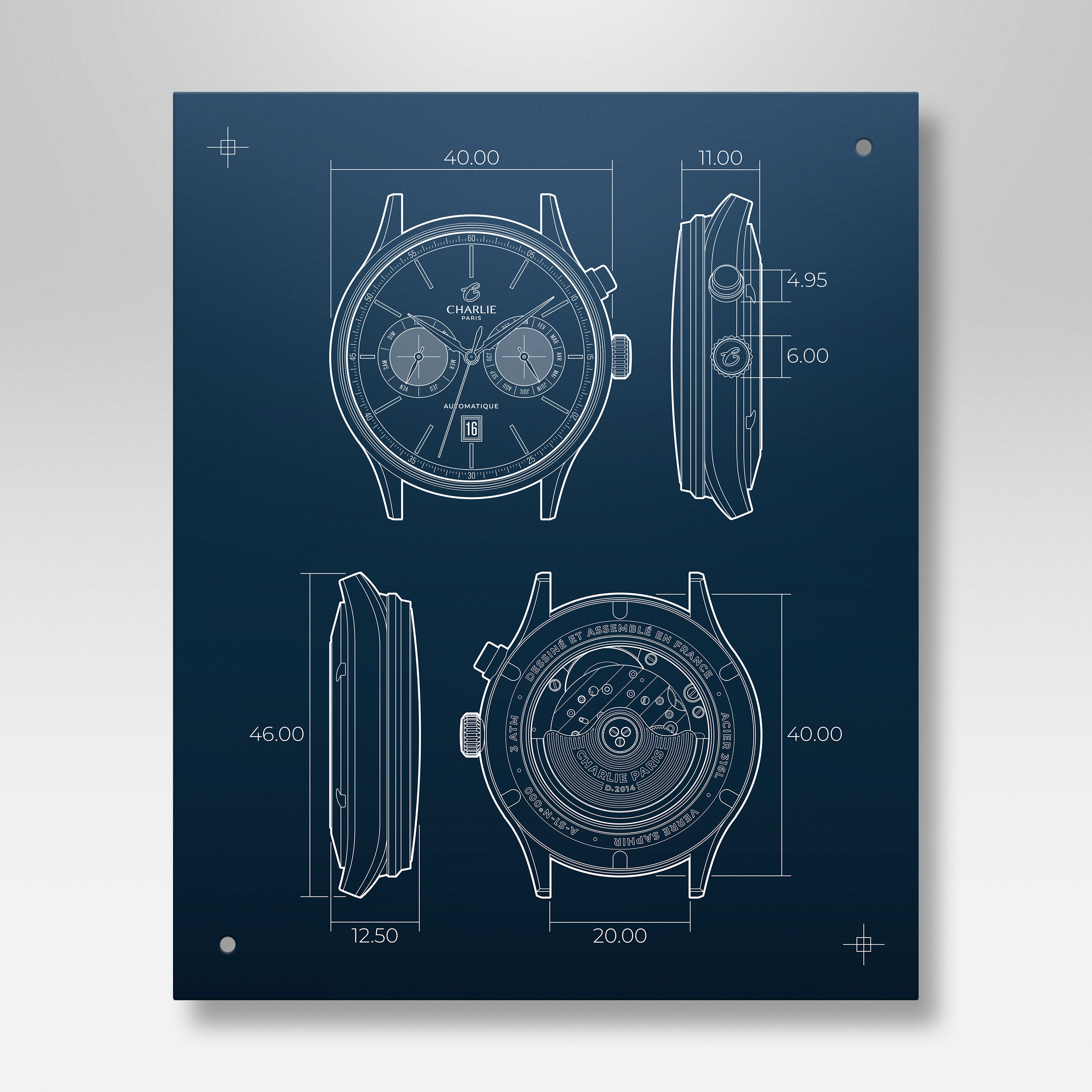
Water has seeped into my watch : What can I do ?
Water has infiltrated your watch and you don't know what to do? Don't worry, Team Charlie Paris will guide you and explain the steps to take. First of all, if your watch gets watery you will notice it very quickly because steam will appear inside it. But what steps should you take to minimize the impact of water inside the case? In this article, we will answer this question through the following points:
What are the first steps to take if water has infiltrated my watch?
- If your watch gets water inside, you will notice it very quickly. The main advice we can give you is to go quickly to a watchmaker. Indeed, the longer the water remains inside the case, the more the dial, the hands or even the movement of your watch will be damaged. Under the effect of water or even salt water, the steel elements of your watch will rust internally and thus become very damaged. At Charlie Paris, we have a watchmaker who can take care of your men's watch or women's watch that has taken on water.
- If your watch is left for many days in this humid atmosphere, it is likely to show significant rust marks. The watchmaker will not be able to do much more, he will have to replace parts or all the elements of your watch. So, as you can see, be careful with your watch! Even more so if it is an automatic watch!
- If you can't get to a watchmaker quickly, you can put your watch in a dry place, with the glass of your watch turned against a flat surface. Then, pull the crown (the little wheel you use to set the time) to let the moisture "trapped" in the watch case escape. However, be sure to take your watch to a watchmaker as soon as you can. Even if your watch does not have any apparent water or rust marks on the dial, this does not mean that it is not damaged. Only a watchmaker will be able to determine if it is damaged or not. If you are wondering why steel rusts and stainless steel does not, the Charlie Paris team explains it all in a blog post.
Our tips to prevent water from entering your watch:
- First of all, make sure that the crown of your watch is properly engaged before going into the water. Indeed, it is the crown that guarantees the water resistance of your watch. If your watch is adapted for diving, it is normally equipped with a screw-in crown. In this case, make sure that the crown is screwed in on the axis and at its maximum.
- When you go in the water with your waterproof watch, avoid large temperature differences because, like any material, steel expands and contracts under the effect of heat and cold. It therefore presses on the seals of your watch to a greater or lesser extent and a sudden change in temperature can really damage the water resistance of your watch.
- If you have a chronograph watch (even if it is waterproof) do not use the push buttons when it is underwater. With very few exceptions, if you press the push buttons, water will systematically enter your watch.
- If your watch has received a violent shock, it is possible that the case has been damaged or that the glass has been slightly cracked, which increases the risk of your watch getting water. Take your watch to your watchmaker to have it checked for water resistance.
- Finally, it is important to check the condition of your watch's gaskets, especially if it is not very young. Old gaskets will tend not to ensure the water-resistance of your watch anymore. Also, be careful when changing batteries as the water resistance can be damaged during this process.
You may not know if your watch is waterproof, or what the ATM markings on the back of your watch mean. We invite you to discover our video on this subject.










Leave a comment
This site is protected by hCaptcha and the hCaptcha Privacy Policy and Terms of Service apply.